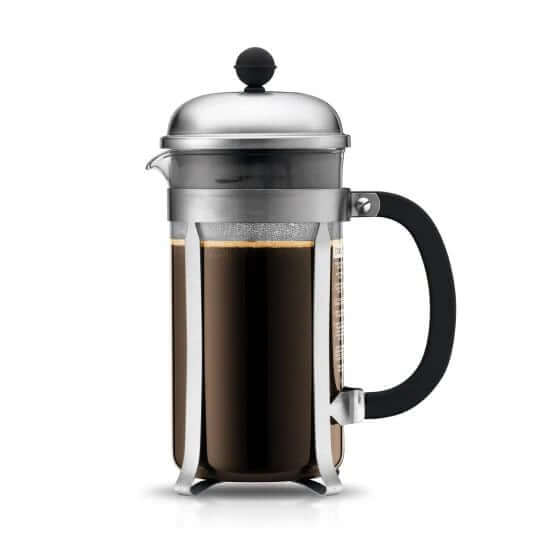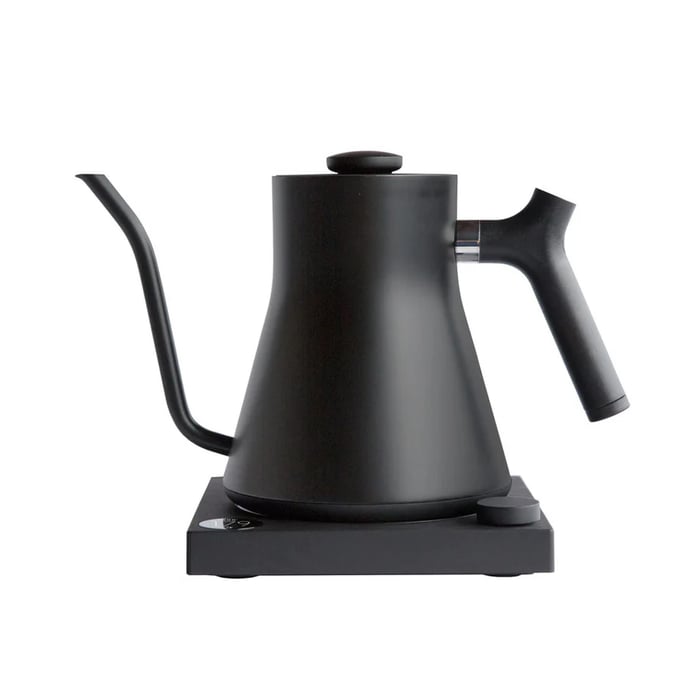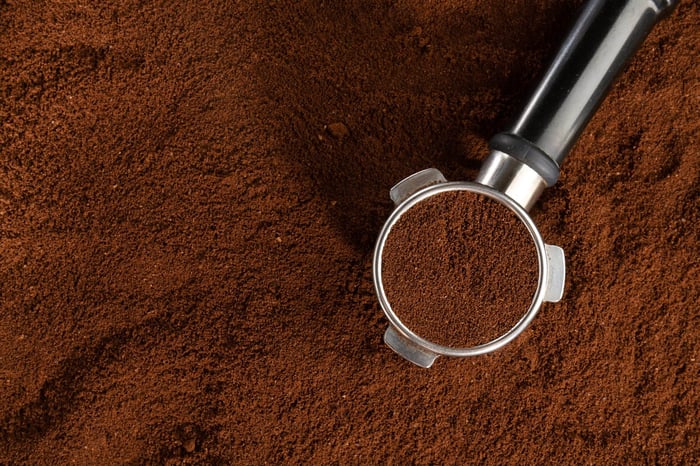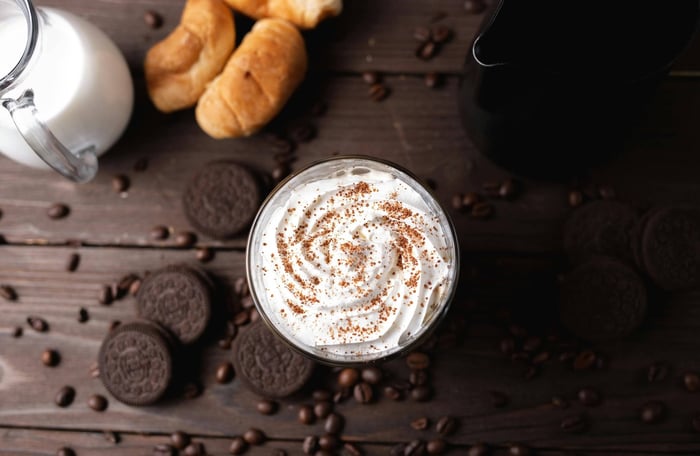Coffee is a popular beverage consumed worldwide, often brewed fresh each day. Whether it’s morning coffee, cold brewed coffee, or a steamy cup of hot coffee, it’s part of many people’s daily routine. However, many people wonder about the safety and quality of drinking coffee that has been left out for a day.
Of course, when you're brewing something flavorful from Bones Coffee, you'll want to savor every drop, whether fresh or leftover.
This article explores the changes in taste, nutritional value, and storage methods associated with day-old coffee, providing insights into whether it remains a viable option to drink coffee after it has been sitting out.
Is It Safe to Drink Day-Old Coffee?
Yes, however, drinking day-old coffee may pose certain health risks due to the potential growth of bacteria and the development of undesirable compounds.
When coffee is left out at room temperature, it becomes a breeding ground for bacteria, especially if it contains milk or cream. These dairy products can spoil quickly, leading to the proliferation of harmful microorganisms.
Bacterial Growth Potential:
- Black Coffee: Low
- Coffee with Milk: High
- Coffee with Sugar: Moderate
Due to its acidity, black coffee is more stable. However, for the best safety, consume it shortly after brewing.
Watch for Toxin Development
Coffee exposed to air oxidizes, breaking down into unpleasant (though not always harmful) compounds. In high humidity, mold may develop, introducing mycotoxins that can impact health. No one wants their morning coffee to become hazardous.
Key Points to Consider:
- Oxidation: This process can alter the chemical composition of coffee, potentially leading to bitter flavors and compounds forming.
- Mold Growth: In humid environments, coffee left out for extended periods may develop mold, producing mycotoxins harmful to health.
Safety Recommendations
Coffee should be stored properly and consumed within a day to minimize health risks. If coffee must be kept longer, refrigeration can slow down bacterial growth and oxidation. However, refrigerated coffee should be consumed within a few days to ensure safety and quality.
Note: While the risks associated with drinking day-old coffee are generally low for healthy individuals, those with compromised immune systems or specific health conditions should exercise caution and avoid consuming old coffee, especially if it contains dairy products. |
Does Day-Old Coffee Go Bad?
Yes. Coffee deteriorates due to air exposure, temperature changes, and additives like milk. Coffee left out at room temperature for an extended period is more likely to spoil.
The general guideline is that coffee should not be left out for over 12 hours. Beyond this time frame, the risk of bacterial growth increases, especially if the coffee contains milk or cream.
Time Left Out | Risk Level | Details |
0–4 hours | Low | Freshness and safety are generally maintained for black coffee. |
4–12 hours | Moderate | Flavor degrades; safety is usually not an issue unless exposed to contamination. |
12+ hours | High | Mold or bacteria can start to develop, especially in warm, moist environments. Additives like milk sharply increase risk much earlier. |
Storing coffee in an airtight, opaque container in a cool location slows deterioration. Refrigeration is best for extending the shelf life, though flavor may change.
How Does Day-Old Coffee Taste?

Not great. Coffee degrades quickly due to oxidation. Volatile oils and organic acids break down, creating a bitter, flat flavor.
Factors That Affect Flavor:
- Air Exposure: Triggers oxidation and flavor loss.
- Temperature: Speeds up chemical degradation.
- Light: Breaks down aromatic compounds.
- Brewing Method: Impacts retention of flavor components.
The taste of coffee changes after a day, primarily due to oxidation and the breakdown of organic acids. These processes are influenced by environmental factors and the initial brewing method, resulting in a less vibrant and more bitter flavor profile.
Note: While the taste of day-old coffee may not be as appealing as freshly brewed coffee, it is generally safe to consume. |
Can You Improve the Taste of Day-Old Coffee?
Yes. You can mask or refresh stale coffee using ingredients and methods that enhance flavor. One approach is to add flavor-enhancing ingredients.
Fans of cold coffee or cold-brewed coffee often add syrups or flavorings to improve their drink after storing.
Additive | Effect on Flavor | Additional Benefits |
Milk or Cream | Reduces bitterness, adds creaminess | Provides a richer mouthfeel |
Sweeteners | Masks stale taste, adds sweetness | Enhances overall flavor profile |
Spices | Introduces new flavors | Adds aromatic complexity |
Reheating Tips:
- Reheat slowly (stovetop or microwave on low).
- Don’t boil—it intensifies bitterness.
- Aim for ~150°F (65°C) to restore warmth without losing flavor.
- Freeze leftover coffee into coffee ice cubes and add to iced coffee to avoid dilution.
Other Ideas:
- Blend with Fresh Coffee: Dilutes stale notes; use stronger brew.
- Use Coffee Ice Cubes: Made from fresh coffee to chill and refresh.
- Use Strong Brewing Methods: French press or pour-over enhances richness.
Employing these techniques can significantly improve the taste of day-old coffee, making it a more enjoyable beverage.
Tip: To further enhance the taste, consider using a French press or pour-over method, as these brewing techniques can produce a richer and more aromatic cup. |
What Is the Best Way to Store Brewed Coffee?
Proper storage of brewed coffee is essential to maintaining its flavor and preventing spoilage. The primary factors affecting the freshness of brewed coffee are exposure to air, light, and temperature. To preserve the quality of brewed coffee, it is vital to consider the following storage methods and conditions.
Avoid Plastic Containers
Plastic can absorb odors and flavors, which may affect the taste of the coffee.
Use Airtight Containers
Using an airtight container is one of the most effective ways to store brewed coffee. Airtight containers minimize exposure to air, which can lead to oxidation and a stale taste.
When selecting a container, ensure it is made of non-reactive materials such as glass or stainless steel to prevent chemical interactions that could alter the coffee's flavor.
Refrigerate
The temperature at which coffee is stored significantly impacts its longevity. Brewed coffee should ideally be stored at a consistent, cool temperature.
While room temperature storage is acceptable for short periods, refrigeration is recommended for more extended storage. Refrigeration slows down the degradation process, helping to preserve the coffee's flavor and aroma.
Keep It Dark
Light exposure can accelerate the degradation of brewed coffee, leading to a loss of flavor and aroma. Store coffee in a dark place or use opaque containers that block light to prevent this. This is particularly important if the coffee is stored at room temperature.
Storage Duration
The duration for which brewed coffee can be stored depends on the storage conditions. Below is a table summarizing the recommended storage durations based on different conditions:
Storage Condition | Recommended Duration | |
 | Room Temperature | Up to 12 hours |
 | Refrigerated | Up to 3-4 days |
 | Airtight Container | Up to 24 hours |
Additional Tips:
- Avoid adding milk or cream, as these can spoil quickly.
- Label the sealed container with the brewed date to keep track of its freshness.
By following these guidelines, the freshness and quality of brewed coffee can be maintained, allowing for a more enjoyable consumption experience even after storage.
Does Refrigeration Help?
Yes. Refrigeration slows spoilage and oxidation. Coffee stored this way stays safe for 3-4 days, though flavor may fade.
Preserve Quality By:
- Using airtight, odor-proof containers (glass or stainless steel).
- Letting coffee cool before refrigeration.
- Keeping it away from light exposure.
While refrigeration can preserve coffee's safety, it may still affect its flavor. The cold temperature can cause the coffee to lose some of its aromatic compounds, producing a less vibrant taste.
Additionally, reheating refrigerated coffee can further alter its flavor profile, often resulting in a more bitter or flat taste.
Note: While refrigeration can extend the life of brewed coffee, it is generally recommended that coffee be consumed as fresh as possible to enjoy its full flavor and aroma. |
Can You Reheat Day-Old Coffee?
Yes, but how you reheat it matters. Some methods preserve flavor better than others, each with its own advantages and disadvantages.
Whether heating it for a quiet moment or mixing it into your favorite coffee recipe, that bold Bones Coffee medium roast is more forgiving than many generic blends.
Microwave
The microwave is a quick and convenient option for reheating coffee. It is important to use a microwave-safe container and to heat the coffee in short intervals, typically 20-30 seconds, to prevent overheating and burning.
This method may cause uneven heating and can sometimes alter the flavor profile of the coffee.
Stovetop
Reheating coffee on the stovetop allows for more control over the temperature. It is recommended to use a small saucepan and heat the coffee over low to medium heat, stirring occasionally to ensure even heating.
This method can help preserve the coffee's flavor better than the microwave, but requires more time and attention.
Coffee Maker
Some coffee makers have a warming plate that can be used to reheat coffee. This method is convenient if the coffee maker is already in use, but it may not heat the coffee as evenly or as quickly as other methods.
Electric Kettle
An electric kettle with a temperature control feature can reheat coffee. Pour the coffee into the kettle and set it to a low temperature to gently warm the beverage.
This method is efficient and can help maintain the coffee's flavor integrity.
Reheating Tips:
- Never boil: It intensifies bitterness.
- Reheat only what you’ll drink.
- Aim for 150°F (65°C); if coffee contains milk, 165°F (74°C) is recommended for safety.
By selecting the appropriate method and following best practices, reheated coffee can be enjoyed with minimal loss of quality.
Safety Note: Don’t reheat coffee left at room temperature for more than 12 hours, especially if it contains dairy. |
Refresh Your Routine
While day-old coffee is generally safe to drink, its taste and nutritional value may diminish. Proper storage and reheating methods can help maintain its quality, and leftover coffee—especially black coffee without added milk— can be reused creatively beyond consumption.
But why settle for stale when a fresh cup bursting with Bones Coffee’s bold flavors is just one sip away?
Whether you prefer a smooth hot coffee in the morning or something more adventurous, explore our wide range of unique flavors and single-origin coffees, expertly roasted in small batches to ensure every sip is a smooth, aromatic delight.
Transform your coffee experience today and find your new favorite flavored coffee!







